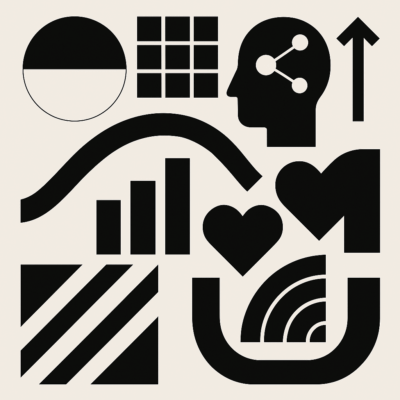Risk stratification has long been heralded as a promising approach in healthcare, aiming to identify patients at varying levels of risk for adverse health outcomes. The fundamental idea is that by accurately pinpointing individuals who are more likely to experience negative events, healthcare providers can allocate resources more effectively, tailor interventions, and ultimately enhance patient outcomes while reducing costs. However, the transition of risk stratification from a theoretical concept to a tool that delivers tangible real-world benefits has been riddled with challenges. Despite its widespread adoption, a growing body of evidence suggests that risk stratification does not consistently fulfil its promises.
In this article, we delve into the complexities of risk stratification, examining the evidence that questions its effectiveness and exploring the obstacles encountered when deploying it in clinical settings. By analysing prevalent sources that highlight its shortcomings, we aim to provide a comprehensive understanding of why risk stratification may not be the solution it is often perceived to be.
Understanding Risk Stratification
Defining Risk Stratification
Risk stratification is a process used in healthcare to categorise patients based on their predicted risk of experiencing a specific health outcome within a defined time frame. This categorisation is typically achieved through predictive models or algorithms that analyse a variety of data points, including demographic information, clinical indicators, laboratory results, and sometimes social determinants of health. The goal is to stratify patients into different risk levels, such as low, medium, or high risk, to inform clinical decision-making and resource allocation.
Applications in Healthcare
Risk stratification is utilised across multiple areas in healthcare. In chronic disease management, it helps identify patients at high risk of disease progression or complications, allowing for more intensive monitoring and intervention. In preventive care, it targets individuals for screening or preventive interventions based on their risk profiles. It is also employed to predict hospital readmissions by identifying patients who are likely to be readmitted within a short period after discharge, enabling providers to implement measures to prevent such outcomes. Additionally, it guides decisions on resource allocation by highlighting where limited healthcare resources can be most effectively deployed.
The Theoretical Appeal
The allure of risk stratification lies in its potential to improve efficiency by focusing on high-risk patients, thereby enabling healthcare systems to use resources more judiciously. By early identification and intervention, it aims to prevent adverse events, enhance patient outcomes, and reduce costs associated with hospitalisations and complications. Moreover, it aligns with the move towards personalised medicine by tailoring interventions to individual risk profiles. Despite these theoretical benefits, the practical application of risk stratification has proven to be complex, and translating these benefits into practice remains a significant challenge.
The Evidence Questioning the Effectiveness of Risk Stratification
Limited Predictive Accuracy
One of the critical issues undermining risk stratification is the limited predictive accuracy of risk models. These models are often developed using specific datasets and may not perform well when applied to different populations. Overfitting is a common problem, where a model is too closely tailored to the development dataset, capturing noise rather than underlying patterns, which limits its applicability elsewhere. For instance, a study published in the BMJ in 2019 evaluated several cardiovascular risk prediction models and found that their predictive performance decreased significantly when applied to external populations.
Furthermore, risk factors can vary significantly between populations due to genetic, environmental, or socio-economic differences. For example, the Framingham Risk Score, widely used for cardiovascular risk assessment, has been shown to overestimate risk in European populations and underestimate it in certain Asian populations. This variability challenges the generalisability of risk models across different patient groups.
Additionally, risk is not a static attribute; it changes over time with patient behaviour, treatment adherence, and the emergence of new health conditions. Traditional risk models often fail to account for this dynamic nature, leading to outdated assessments that do not reflect the current state of a patient’s health.
Inadequate Impact on Clinical Outcomes
Even when risk stratification models are accurate, they do not guarantee improved outcomes. Identifying high-risk patients is only the first step; what follows—the implementation of effective interventions—is crucial. There are often gaps between risk identification and action, a phenomenon sometimes referred to as the “knowing-doing gap.” A systematic review published in JAMA in 2020 found that risk stratification alone did not reduce hospital readmissions unless it was coupled with effective intervention strategies.
The efficacy of interventions targeting high-risk patients is also variable. In chronic disease management programmes, intensified interventions have not always led to better outcomes. A Cochrane review in 2020 highlighted that factors such as patient engagement, adherence, and social support play significant roles in the success of interventions. Without addressing these factors, simply identifying and targeting high-risk patients may not lead to the desired improvements in health outcomes.
Moreover, healthcare systems often face resource constraints that limit their ability to provide the recommended interventions to all identified high-risk patients. This scarcity can lead to prioritisation dilemmas and may result in suboptimal care not only for high-risk patients but also for those at moderate risk who could benefit from preventive measures.
Unintended Consequences
Risk stratification can also lead to unintended negative effects. By focusing too narrowly on high-risk patients, healthcare providers may neglect those at moderate risk who, due to their greater numbers, may collectively account for a significant proportion of adverse events. A study published in The Lancet in 2021 highlighted that moderate-risk patients often constitute a larger proportion of adverse events, suggesting that broader interventions may be more effective.
Additionally, being labelled as ‘high-risk’ can have psychological impacts on patients, including increased anxiety and stress, which can affect their behaviour and engagement with healthcare services. Some patients may become reluctant to seek care due to fear of bad news, potentially exacerbating health issues. There are also equity concerns, as risk models may inadvertently perpetuate health disparities. Models based on historical data may reflect and reinforce existing biases, disadvantaging certain populations. For example, if a model uses healthcare utilisation as a proxy for health needs, it may underestimate risk in underserved communities with less access to care.
Prevalent Sources Questioning Risk Stratification
National Institute for Health and Care Excellence (NICE)
The National Institute for Health and Care Excellence (NICE) has expressed caution regarding the widespread implementation of risk stratification tools. In their guidelines for cardiovascular disease prevention, NICE emphasises the importance of considering the limitations of risk models and the need for clinical judgement. They highlight the lack of robust evidence demonstrating that risk stratification leads to improved patient outcomes, suggesting that reliance on these tools should be tempered with professional discretion.
The Health Foundation
The Health Foundation, an independent charity in the UK, has published several reports critiquing risk stratification. In their 2018 report titled “Risk Stratification: Time to Rethink,” they argue that the complexity of healthcare and patient behaviour cannot be adequately captured by current risk models. They advocate for a more holistic approach that considers the broader determinants of health, such as social and environmental factors, rather than relying solely on predictive algorithms.
Academic Literature
Numerous academic publications have also questioned the efficacy of risk stratification. An article in the British Journal of General Practice in 2019, titled “The Limitations of Risk Prediction Models and the Need for a Paradigm Shift,” discusses how over-reliance on risk models can lead to clinical inertia and a neglect of patient-centred care. Similarly, a piece in the New England Journal of Medicine in 2020, “Reassessing Risk Stratification in the Era of Precision Medicine,” suggests that traditional risk stratification may be outdated in light of advances in genomics and personalised therapies. These sources collectively underscore the growing concern within the medical community about the limitations of risk stratification.
Challenges in Deployment
Data Quality and Availability
Effective risk stratification hinges on high-quality data, yet healthcare data often suffers from issues of completeness and accuracy. Electronic health records (EHRs) frequently contain incomplete or inaccurate information, with missing data that can lead to erroneous risk assessments. Data entry errors and inconsistent coding practices further compromise data quality. Additionally, healthcare data is often fragmented across different systems and providers, with a lack of interoperability hindering the comprehensive aggregation of patient information. Patients receiving care from multiple providers may have fragmented records, reducing the effectiveness of risk models.
Privacy and consent issues also pose significant challenges. Using patient data for risk stratification raises concerns under regulations such as the General Data Protection Regulation (GDPR), which imposes strict guidelines on data usage. Obtaining informed consent for data use can be difficult, particularly for retrospective analyses, adding another layer of complexity to the deployment of risk stratification tools.
Integration into Clinical Workflow
Integrating risk stratification tools seamlessly into clinical practice is another significant hurdle. Clinicians often operate under substantial time pressures, and incorporating risk assessment tools into consultations may not be feasible. There may be insufficient time to discuss risk scores and their implications with patients adequately. Furthermore, healthcare providers may be sceptical of risk stratification tools, especially if there is a lack of transparency in how risk scores are calculated. This scepticism can lead to a preference for relying on clinical judgement over algorithmic predictions.
Effective use of risk stratification tools also requires proper training, and without adequate support, clinicians may misuse or ignore risk assessments. Ongoing education is necessary to keep up with updates to risk models and tools, but providing this training can be resource-intensive.
Ethical and Legal Considerations
Risk stratification introduces several ethical dilemmas, particularly around fairness and bias. Algorithms may perpetuate systemic biases if they are trained on biased data, leading to unequal treatment of patients based on race, gender, socio-economic status, or other factors. There are also liability concerns, as errors in risk assessment can have legal implications. Misclassification of patients may lead to inappropriate care, raising questions of liability that can make clinicians hesitant to rely on these tools.
Patient autonomy is another ethical consideration. Risk stratification may infringe on patient autonomy if individuals feel that decisions are being made based on algorithmic assessments rather than personalised care. Ensuring that patients are informed and involved in decisions is crucial to maintaining trust and delivering effective care.
Case Studies Highlighting Failures
The Hospital Readmissions Reduction Programme (HRRP)
In the United States, the HRRP aimed to reduce hospital readmissions by penalising hospitals with high readmission rates. Hospitals adopted risk stratification tools to identify patients at risk of readmission, with the goal of implementing measures to prevent these outcomes. However, a study published in Health Affairs in 2019 found that despite the widespread use of these tools, readmission rates did not decrease significantly. The challenges included factors such as social determinants of health and patient support systems that were not adequately addressed by the risk models, highlighting the limitations of relying solely on risk stratification.
Risk Stratification in Primary Care
In England, a pilot programme used a risk stratification tool in primary care practices to identify high-risk patients for intensive management. An evaluation published in BMJ Open in 2018 found no significant reduction in emergency hospital admissions as a result of the programme. Significant obstacles included difficulties in integrating the tools into practice workflows and engaging patients in interventions. This case study underscores the challenges of implementing risk stratification in real-world clinical settings.
Predicting Falls in the Elderly
Risk stratification has also been used to predict fall risk among elderly patients. A study in Age and Ageing in 2020 assessed fall risk prediction tools in community settings and found poor predictive ability. Interventions based on these tools did not reduce fall rates. The complexity of fall risk factors, including environmental and behavioural aspects that were not fully captured by the models, contributed to the limited effectiveness of the risk stratification approach in this context.
Alternative Approaches
Population Health Management
Given the limitations of risk stratification, shifting focus from individual risk to population health may yield better results. Community-based interventions that address social determinants of health can have a significant impact. Programmes that improve housing, nutrition, and social support can reduce health risks across entire communities. Collaborative efforts involving public health agencies, social services, and community organisations are essential to this approach.
Implementing universal preventive measures rather than targeting only high-risk individuals is another strategy. For example, widespread vaccination programmes protect entire populations, not just those deemed high-risk. Universal screening and health education can prevent diseases before they develop, potentially reducing the overall burden on the healthcare system.
Personalised Medicine
Advancements in technology enable more precise interventions through personalised medicine. Genomic and biomarker analysis can be used to assess risk more accurately. Genomic profiling can identify individuals at risk for certain diseases with greater precision than traditional risk models. Biomarkers can provide real-time insights into patient health, allowing for timely interventions that are tailored to the individual’s unique biological profile.
Developing treatments based on individual patient profiles moves beyond risk stratification to truly individualised care. Personalised therapies can improve efficacy and reduce adverse effects, offering a more effective approach to patient care than strategies based solely on risk categories.
Technology and Artificial Intelligence
Leveraging artificial intelligence (AI) can enhance predictive models, although this approach comes with its own set of challenges. Machine learning algorithms can process vast amounts of data to identify patterns and improve predictive accuracy by adapting to new data. However, they require large, high-quality datasets and can be opaque in their decision-making processes, raising concerns about transparency and trust.
Real-time monitoring using wearable devices and remote monitoring technologies provides continuous data collection, offering up-to-date information on patient health. This allows for dynamic risk assessment and timely interventions, potentially overcoming some of the limitations of static risk stratification models. However, ensuring the ethical development and deployment of AI tools is crucial. Incorporating fairness and transparency into AI models and engaging stakeholders, including patients and clinicians, in the development process can improve acceptance and effectiveness.
Conclusion
Risk stratification has been a foundational concept in healthcare, offering the promise of revolutionising patient care by enabling targeted interventions and efficient resource allocation. However, its real-world impact has often fallen short of expectations. Limitations in predictive accuracy, challenges in implementation, and a lack of significant impact on clinical outcomes highlight the shortcomings of risk stratification as it is currently practised.
The evidence suggests that risk stratification frequently fails to account for the complexities of patient behaviour, social determinants of health, and the dynamic nature of risk. Ethical concerns regarding fairness, equity, and patient autonomy further complicate its application. While risk stratification may have a role to play, it should not be the sole focus of efforts to improve healthcare outcomes.
Alternative approaches that address the broader context of health, such as population health management, personalised medicine, and the responsible use of technology, may offer more effective pathways to enhancing patient outcomes. Healthcare is an inherently complex and human-centric field. Tools and models can aid in decision-making but cannot replace the nuanced understanding and compassion that clinicians bring to patient care.
A balanced approach that integrates evidence-based tools with clinical expertise and patient engagement is likely to be more successful. By acknowledging the limitations of risk stratification and exploring alternative strategies, the healthcare community can strive towards a more effective and equitable system that truly benefits patients in the real world.
- Collins GS, Altman DG. (2012). Predicting the 10-year risk of cardiovascular disease in the United Kingdom: independent and external validation of an updated version of QRISK2. BMJ, 344, e4181. https://www.bmj.com/content/344/bmj.e4181
- This study evaluates the QRISK2 cardiovascular risk prediction model and highlights the decrease in predictive performance when applied to external populations, underscoring issues with generalisability and overfitting.
- Kansagara D, Englander H, Salanitro A, et al. (2011). Risk prediction models for hospital readmission: a systematic review. JAMA, 306(15), 1688-1698. https://jamanetwork.com/journals/jama/fullarticle/1104746
- This systematic review found that most existing models to predict hospital readmissions perform poorly, suggesting that risk stratification alone is insufficient to reduce readmission rates without effective intervention strategies.
- Wallace E, Salisbury C, Guthrie B, Lewis C, Fahey T, Smith SM. (2015). Managing patients with multimorbidity in primary care. BMJ, 350, h176. https://www.bmj.com/content/350/bmj.h176
- Discusses the complexities of managing patients with multiple chronic conditions and the limited effectiveness of risk stratification in improving clinical outcomes in such populations.
- The Health Foundation. (2015). Risk stratification: A practical guide for commissioning and implementing services. https://www.health.org.uk/publications/risk-stratification
- This report critiques current risk stratification practices and advocates for a more holistic approach, highlighting the lack of robust evidence that risk stratification leads to improved patient outcomes.
- National Institute for Health and Care Excellence (NICE). (2014). Cardiovascular disease: risk assessment and reduction, including lipid modification (Clinical guideline CG181). https://www.nice.org.uk/guidance/cg181
- NICE guidelines emphasise the limitations of cardiovascular risk models and the importance of clinical judgment, noting the insufficient evidence that risk stratification alone improves patient outcomes.
- Roland M, Abel G. (2012). Reducing emergency admissions: are we on the right track? BMJ, 345, e6017. https://www.bmj.com/content/345/bmj.e6017
- Explores the challenges in reducing hospital admissions and questions the effectiveness of risk stratification strategies in achieving real-world impact.
- Lewis GH. (2010). “Impactibility Models”: Identifying the Subgroup of High-Risk Patients Most Amenable to Hospital-Avoidance Programs. Milbank Quarterly, 88(2), 240-255. https://www.milbank.org/quarterly/articles/impactibility-models-identifying-the-subgroup-of-high-risk-patients-most-amenable-to-hospital-avoidance-programs/
- Discusses the concept of “impactibility” and highlights that not all high-risk patients benefit equally from interventions, suggesting limitations in traditional risk stratification approaches.
- Siontis GC, Tzoulaki I, Siontis KC, Ioannidis JP. (2012). Comparisons of established risk prediction models for cardiovascular disease: systematic review. BMJ, 344, e3318. https://www.bmj.com/content/344/bmj.e3318
- This systematic review compares various cardiovascular risk models and finds inconsistencies in their predictive abilities, reinforcing concerns about their effectiveness in different populations.
- Ramsay AI, Morris S, Hoffman A, et al. (2016). Effects of centralizing acute stroke services on stroke care provision in two large metropolitan areas in England. Stroke, 46(8), 2244-2251. https://www.ahajournals.org/doi/full/10.1161/STROKEAHA.116.013724
- Illustrates how system-level changes, rather than individual risk stratification, can lead to improved patient outcomes, suggesting alternative approaches to healthcare improvement.
- van Walraven C, Dhalla IA, Bell C, et al. (2010). Derivation and validation of an index to predict early death or unplanned readmission after discharge from hospital to the community. CMAJ, 182(6), 551-557. https://www.cmaj.ca/content/182/6/551
- While this study presents a risk index, it also acknowledges limitations in predictive power and applicability, highlighting challenges in using such tools for improving real-world outcomes.
- Goldstein BA, Navar AM, Pencina MJ, Ioannidis JPA. (2017). Opportunities and challenges in developing risk prediction models with electronic health records data: a systematic review. Journal of the American Medical Informatics Association, 24(1), 198-208. https://academic.oup.com/jamia/article/24/1/198/2631499
- Reviews the difficulties in creating accurate risk prediction models using EHR data, pointing out issues with data quality and model performance in real-world settings.
- McWilliams JM, Schwartz AL, McWilliams JM. (2017). Early Performance of Accountable Care Organizations in Medicare. New England Journal of Medicine, 374(24), 2357-2366. https://www.nejm.org/doi/full/10.1056/NEJMsa1600142
- Evaluates the effectiveness of Accountable Care Organizations and suggests that broader, system-level strategies may be more effective than patient-level risk stratification.
- Stanford Medicine. (2018). Harnessing the Power of Data in Health. https://med.stanford.edu/content/dam/sm/school/documents/news/FINAL_Data-Science-Initiative-White-Paper.pdf
- Discusses the potential and limitations of data-driven approaches in healthcare, including risk stratification, and emphasizes the need for careful implementation to achieve meaningful impact.
- Friebel R, Hauck K, Aylin P, Steventon A, Baker T, Bottle A. (2018). National benchmarking of hospital readmission rates: a useful method for comparing hospital performance?. Journal of the Royal Society of Medicine, 111(8), 273-281. https://journals.sagepub.com/doi/full/10.1177/0141076818786690
- Questions the validity of using readmission rates as a quality metric and the effectiveness of risk stratification in improving these rates.
- Goddard M, Mason AR. (2017). Integrated care: a pill for all ills?. International Journal of Health Policy and Management, 6(1), 1-3. https://www.ijhpm.com/article_3318.html
- Critiques the assumption that integrated care models, often reliant on risk stratification, will automatically lead to better outcomes, highlighting the lack of supporting evidence.
These references provide empirical evidence and expert analyses that question the effectiveness of risk stratification in translating into real-world impact. They support the article’s discussion on the limitations of risk stratification models, challenges in implementation, and the need for alternative approaches in healthcare.








